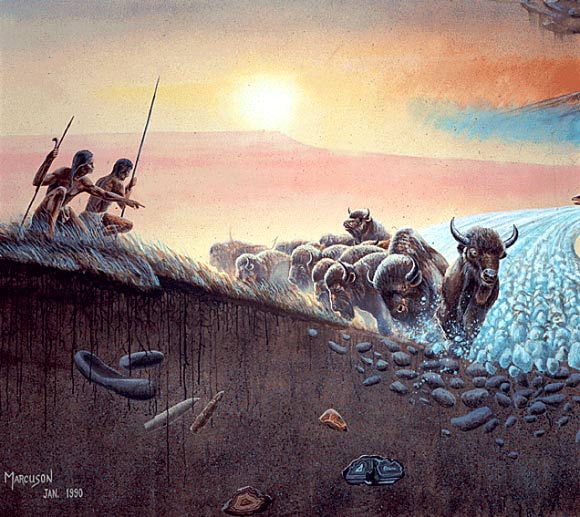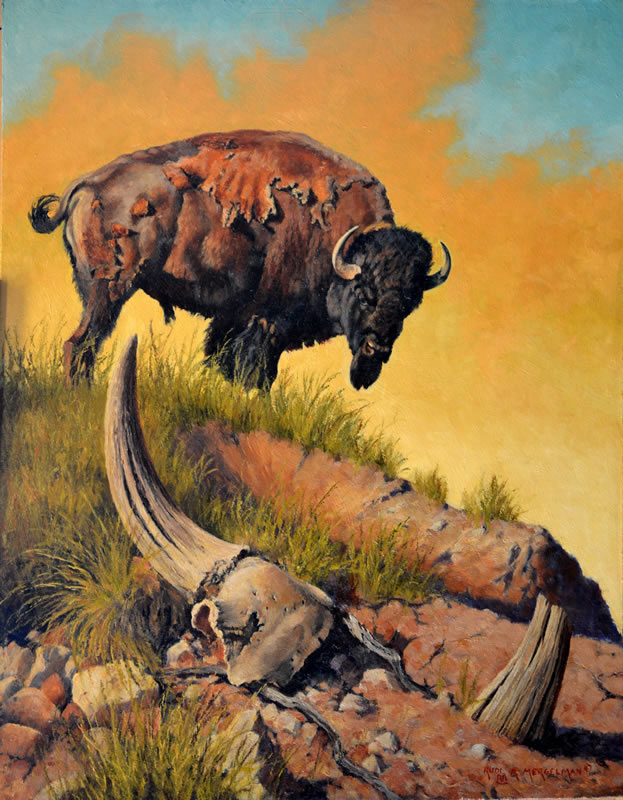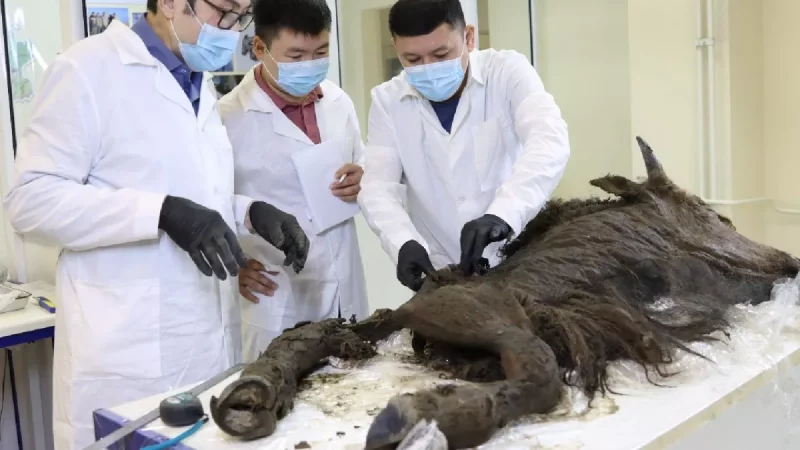A team of scientists from Florida Atlantic University has uncovered the 14,000-year-old bones of Bison antiquus — a large-horned, extinct relative of the modern bison — at the Old Vero Man site in Florida.

Paleo-Indian hunters scout a herd of Bison antiquus. Hunters often killed large numbers of bison by driving a herd over a cliff. Image credit: Mark Marcuson / University of Nebraska State Museum.
Sometimes referred to as the ancient bison, Bison antiquus is a direct ancestor of the extant American bison (Bison bison).
The species arrived in North America approximately 250,000 years ago from eastern Asia and eventually ranged from Florida to Oregon.

It disappeared from the Mid-South around 10,000 years ago, finally dying-out around 5,000 years ago.
According to paleontologists, Bison antiquus was approximately 8 feet (2.4 m) tall, 15 feet (4.6 m) long and weighed close to 1,600 kg.

The newly-discovered bones of this species were found just 10 feet (3 m) below the ground’s surface during the final stretch of the 2016 excavation efforts at the Old Vero Man site.
The Florida Atlantic University scientists identified Bison antiquus using an upper molar.
“This finding is especially significant because of the meticulous documentation that has been involved,” said principal investigator Dr. James Adovasio.

“Along with the fact that bones like this have never been found on land as part of a calculated archaeological effort.”
“Others like this have all been found underwater, in sinkholes or streams.”
Team member Dr. Andrew Hemmings added: “we couldn’t have asked for a better representative species from that era.”
“We now know that people were here in Vero Beach at that time.”
Source: sci.news








